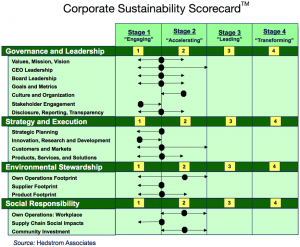A Case of TIMO Digital Bank

Credits
Analysts
Ms Ellie Nguyen, Analyst
Ms Avryl Tan, Analyst
Mr Xander Ho, Analyst
Research
Mr James Tan
Preface
This report explores the expedition of Timo, one of Vietnam’s trailblazers in digital banking, and its role in revolutionizing the country’s banking landscape. Founded with a mission to transform traditional banking, Timo set out to offer a digital, fee-free and user-centric financial experience that resonates with Vietnam’s growing mobile-first population. Its rapid rise in the competitive fintech market is a compelling case study of innovation and strategic partnerships in action.
Timo’s collaboration with BVBank combined the agility of a startup and the operational strength and regulatory expertise of an established institution. This partnership between a nimble startup and an established bank exemplifies the power of corporate-startup alliances in driving growth and disruption within the fintech ecosystem.
With a focus on customer-first values, Timo redefined user expectations in Vietnam’s banking sector, offering a hybrid engagement model and cutting-edge technological solutions that cater to the evolving needs of customers. The bank’s ability to maintain a competitive advantage in a rapidly changing market, while fostering continuous innovation and learning, has made it a key player in the country’s digital transformation.
There has been a perception that corporate companies in Vietnam are rarely involved in innovation for startups. This perception is aged, and the collaboration between Vietnam’s Timo and BVBank highlights the presence of corporate and startup partnerships, in a journey for innovation.
As Vietnam continues to undergo rapid digital transformation, Timo’s journey offers important insights into how fintechs can thrive in a developing market by leveraging technology, fostering collaboration, and maintaining an unwavering focus on customer experience. Through Timo’s story, we gain valuable perspectives on the evolving future of banking in Southeast Asia and beyond.
Foreword
Mr James Tan
Managing Partner
Quest Ventures
Timo Digital Bank’s corporation innovation journey with BVBank offers valuable lessons for other corporations and startups in Vietnam. Timo’s collaboration with BVBank combined the agility of a startup and the operational strength and regulatory expertise of an established institution. This partnership between a nimble startup and an established bank exemplifies the power of corporate-startup alliances in driving growth and disruption within the fintech ecosystem, and the startup and innovation ecosystem at large.
There has been a perception that corporate companies in Vietnam are rarely involved in innovation for startups. This perception is aged, and the collaboration between Vietnam’s Timo and BVBank highlights the presence of corporate and startup partnerships, in a journey for innovation.
Introduction
It was early 2022, at the tail-end of the Covid-19 pandemic, when Jonas Eichhorst first walked into Timo’s new, modern, two-level office on bustling Nguyen Thi Minh Khai Street in Ho Chi Minh City. Outside, the street buzzed with the sounds of Vietnam’s rapid economic transformation—motorbikes weaving through traffic, vendors calling out, and construction cranes lifting the skyline higher by the day. Inside Timo’s office, the energy was different. It was more focused, more deliberate, yet brimming with a quiet urgency.
The space was open, designed intentionally without cubicles or glass-enclosed corner offices that signal hierarchy in more traditional setups. Here, the atmosphere was about collaboration, not rank. The few walls that existed were whiteboards scribbled with ideas, flowcharts, and product mockups.
At any given moment, groups huddled together, discussing user feedback or brainstorming new features for the bank’s ever-evolving digital platform. Coders tapped furiously at their keyboards, while designers sketched out product ideas that would later be debated, refined, and turned into reality. The sound of spontaneous conversations echoed across the office as people exchanged quick ideas or sought advice, blurring the lines between departments. This was not just a workplace—it was a living, breathing ecosystem of innovation, where agility and user-centric design were the lifeblood of everything they did.
Founded with a vision to transform traditional banking, Timo set out to offer customers a financial experience that was not only digital-first, but also fee-free and designed to simplify everyday banking. In a country where banking traditionally meant long queues, paperwork, and hidden fees, Timo broke away from convention by putting technology and user experience at the core of its offering. Positioned at the forefront of Vietnam’s fintech revolution, Timo leveraged its partnership with BVBank to challenge the long-standing norms of the financial industry. Together, they combined the agility and customer-centric design of a startup with the regulatory expertise and operational strength of an established bank.
As Timo expanded its user base and offerings, one critical question remained: How could it sustain its competitive edge in an increasingly crowded digital banking market? With new players constantly emerging, maintaining leadership in innovation, customer trust, and operational excellence became key to Timo’s growth strategy.
Eichhorst, the newly appointed CEO, quickly grasped the pulse of this dynamic environment. He knew that as one of Vietnam’s leading digital banks, Timo had been at the forefront of the country’s fintech revolution. But his vision went beyond simply riding that wave. His approach was about nurturing a culture that not only responded to change but actively drove it. Leading by example, Eichhorst sits at an unassuming desk among his team, blending seamlessly into the creativity of the young talent around him. He fostered an ethos of ownership, encouraging everyone—regardless of their role or title—to think like entrepreneurs and constantly challenge the status quo.
This report explores how Timo leveraged a strategic partnership with BVBank to disrupt Vietnam’s traditional banking landscape. By combining Timo’s innovative, digital-first approach with BVBank’s regulatory expertise and operational strength, this collaboration highlights the powerful role of corporate-startup partnerships in driving financial innovation. The report delves into Timo’s market strategy, customer-focused product development, and operational challenges, demonstrating how this unique synergy redefined customer expectations and positioned Timo for future growth in Southeast Asia’s dynamic fintech ecosystem.
Vietnam’s Digital Banking Sector
Vietnam’s digital banking sector has experienced rapid growth in recent years, driven by a young and tech-savvy population, increased smartphone penetration, and growing internet access. The country has one of the highest smartphone adoption rates in the region, with over 84% of the population owning a smartphone as of early 2024, making it an ideal market for digital banking solutions (EdTech Agency, 2024). A significant portion of the adult population is increasingly utilizing digital financial services, signaling a major shift in consumer behavior toward digital and mobile-first solutions.
This shift can also be observed in the increasing number of domestic transactions conducted via internet banking. As shown in Figure 1, the quarterly number of internet banking transactions in Vietnam has steadily risen from Q1 2020 to Q1 2023, highlighting the growing adoption of online banking services in the country. This trend aligns with Vietnam’s broader digital transformation and the rising demand for faster, more flexible financial solutions.
Despite this digital readiness, Vietnam’s traditional banking system struggled to keep pace with the rapid technological changes. Conventional banks were characterized by physical branches, long queues, paperwork, and restrictive banking hours. These factors contributed to a significant segment of the population remaining unbanked or underbanked. Only 31% of Vietnam’s population had access to formal financial services as of 2017, highlighting a critical gap in the market (World Bank, 2017).
The rise of fintechs and digital banks presented an opportunity to address these inefficiencies. Digital banking was not just a convenience, but a necessary evolution to meet the growing demand for faster, more flexible, and accessible banking solutions. This dynamic landscape created a fertile ground for new entrants to disrupt traditional banking models and redefine how financial services were delivered.
Timo’s Market Entry and Strategic Positioning
Timo entered the market to address these inefficiencies, aiming to revolutionize the banking experience by going fully digital—no physical branches, no paperwork, and minimal fees. The mobile-first strategy aligned perfectly with Vietnam’s booming mobile internet usage, enabling Timo to cater to a middle-class that was increasingly demanding user-friendly financial services.
Timo’s approach has resulted in impressive growth. The total number of customer accounts is approaching a million, supported by a compound annual growth rate (CAGR) of over 60% since 2020. This rapid growth underscores the effectiveness of Timo’s innovative and user-focused strategy.
Inspired by successful models like Monzo in the UK and N26 in Germany, Timo recognized the potential to introduce similar innovations to Vietnam’s underserved banking market. Eichhorst reflected, “Timo was one of the first to offer fee-free banking in Vietnam. This pushed the broader banking sector to adopt similar models, revolutionizing customer expectations. We saw the inefficiencies in traditional banking, and we moved fast to provide a better solution.” This proactive approach allowed Timo to set itself apart, challenging traditional norms and prompting other banks to rethink their strategies.
Timo Hangouts
In Vietnam, trust in financial services has traditionally been tied to physical bank branches, particularly among the older population. Although the rise of digital banking is gaining momentum, there remains a cultural inclination toward the security offered by traditional banking methods. A significant portion of the population, particularly older generations, associates physical bank presence with reliability and trustworthiness. However, the younger, tech-savvy generation has shown more openness to digital banking, driven by the convenience and efficiency these platforms provide.
While Timo Hangouts were initially established for KYC (Know Your Customer) verification, it evolved into customer engagement hubs, offering a unique blend of digital convenience and personal interaction. This approach mirrored successful retail models like Apple Stores, which thrive on combining online efficiency with offline customer experiences. Partnerships with 7-Eleven and McDonald’s further scaled this model, enhancing Timo’s visibility across Vietnam and providing convenient touchpoints for users.
Partnership with BVBank
In Southeast Asia, corporate-startup partnerships have become increasingly important as legacy financial institutions struggle to innovate. 65% of banks and 76% of credit unions in the region view fintech partnerships as key to their growth strategies (Cornerstone Advisors, 2020). These collaborations allow banks to leverage the agility of startups while providing access to infrastructure, regulatory expertise, and capital.
Timo’s relationship with BVBank is a case study in how corporations and startups can collaborate to drive innovation. While BVBank provided the regulatory framework and financial backing, the partnership thrived on Timo’s ability to remain agile in a rapidly evolving industry. As noted by Eichhorst, “because of how fast things are changing, you need innovative players to keep pushing forward”. This dynamic allowed Timo to innovate swiftly within the constraints of a highly regulated sector. The collaboration enabled Timo to tap into BVBank’s extensive knowledge of compliance and its established customer base, while Timo focused on designing user-friendly products and services.
This collaboration underscores a broader trend in the fintech world: the growing importance of partnerships between legacy financial institutions and digital startups. Traditional banks, often constrained by regulatory and operational hurdles, struggle to keep pace with the rapid innovation seen in the fintech space. Startups like Timo bring the agility and customer-centric design that these institutions need to remain competitive. As Eichhorst noted, “Corporate innovation is not always about grandiose ideas but about recognizing opportunities. BVBank understood that by supporting Timo, they could tap into a rapidly growing customer base while we focused on what we do best—innovating.”
Leveraging BVBank’s infrastructure, Timo was able to launch new products and scale operations swiftly, bypassing the lengthy and costly process of obtaining a full banking license while still offering a comprehensive suite of services to its customers. “The stuff we do isn’t always sexy,” Eichhorst added, “but it’s the compounding micro-innovation that drives the macro-output.”
Product-Market Fit and Standing Out
One of Timo’s key success factors was its commitment to achieving a strong product-market fit. Built on customer feedback, Timo’s offering of zero-fee transactions, easy savings options, and a clean, intuitive app interface quickly gained traction among Vietnam’s digitally savvy consumers. Timo distinguished itself from competitors through strategic decisions and innovative approaches, such as its fee-free model, which challenged traditional fee-based banking structures and set new market standards while doubling down on personal financial management offerings.
Unlike traditional banks encumbered by legacy systems, Timo’s modern, cloud-based infrastructure enabled rapid updates and improvements. This agility allowed Timo to respond swiftly to customer feedback, maintaining a dynamic platform that kept users engaged. “Our early adopters helped us understand what worked and what didn’t,” noted Eichhorst. “We knew that we couldn’t sacrifice simplicity for features, and every decision we made came from understanding our users’ needs.” Additionally, Timo’s hybrid engagement model—blending digital and physical interactions—addressed the trust concerns prevalent in a market still attached to traditional banking.
Timo’s commitment to customer satisfaction is reflected in its churn rate, which has remained below 5% annually for activated customers. Additionally, the current life-time value (LTV) to customer acquisition cost (CAC) ratio is greater than 10x, highlighting the significant value generated per customer. These metrics underscore Timo’s effective user retention strategies and cost-efficient customer acquisition model.
Through these strategic initiatives, Timo not only stood out from its competitors but also set a new benchmark for what digital banking could achieve in Vietnam. Its focus on transparency, rapid innovation, hybrid customer engagement, and strategic partnerships has solidified Timo’s position as a trailblazer in the digital baking sector.
Scaling Operations and Infrastructure
Scaling fintech operations in Vietnam has historically been a complex and challenging endeavor. The country’s diverse geography and regulatory landscape, along with its limited infrastructure have long posed significant barriers to growth for financial service providers. Only 39% of Vietnam’s population lives in urban areas (World Bank, 2023), making it difficult for digital banks to reach rural and remote communities, where traditional banks have historically held a strong foothold due to their physical presence. This geographical divide, coupled with a deeply ingrained trust in conventional banking systems, has created a challenging environment for fintechs seeking to expand their footprint.
Timo’s tech-driven approach, leveraging AI, big data, and machine learning, helped optimize operations and handle growing transaction volumes efficiently. Its partnership with BVBank was instrumental in navigating regulatory complexities, allowing Timo to expand its services while maintaining compliance. Despite these efforts, scaling remains a constant challenge due to logistical realities and the existing trust gap in rural areas.
Driving Innovation Through Collaboration
Timo’s success is grounded in strong leadership, a collaborative culture, and the efforts of its dedicated team. While Eichhorst provided strategic vision, the leadership team and workforce were critical in driving innovation and navigating the challenges of scaling in Vietnam’s evolving fintech landscape.
The leadership team, with diverse expertise in finance, technology, and customer experience, fostered a sense of shared responsibility and decision-making. This empowered team members to take ownership of their work, promoting agility and customer-focused strategies. Timo’s culture minimizes bureaucracy, encourages rapid decision-making, and cultivates creativity, enabling the bank to quickly adapt its products in response to market shifts.
The partnership with BVBank further enhanced this collaboration. Timo’s agility and BVBank’s regulatory infrastructure combined to overcome compliance and operational challenges, allowing Timo to focus on growth and innovation.
Recognizing talent gaps in Vietnam’s startup ecosystem, Timo invested heavily in employee training and development. This focus on continuous learning has strengthened the team’s capabilities and sustained Timo’s competitive edge. BVBank’s resources further enriched talent development, by providing access to broader expertise.
Timo’s work environment, driven by a shared mission to empower customers through technology, has helped attract top fintech talent. “For those looking for an accelerated learning journey and a sense of ownership, Timo is the best place in Vietnam,” said Eichhorst.
Ultimately, Timo’s leadership and team dynamics, alongside its partnership with BVBank, have been key to overcoming challenges and driving innovation in Vietnam’s financial sector.
Conclusion
Over the years, Timo has achieved impressive milestones, growing to almost a million users and positioning itself as one of the most cost-effective digital banking platforms in Vietnam. Looking ahead, Timo is well-positioned to expand beyond Vietnam, leveraging its scalable infrastructure and strong corporate partnerships to become a regional fintech leader.
Timo’s journey with BVBank offers valuable lessons for other corporations and startups. By recognizing each partners’ strengths and focusing on complementary capabilities, corporations can drive innovation and capture new market opportunities. As Timo continues to grow, its story exemplifies how fintech innovation, supported by strategic partnerships, can transform the financial landscape.
Citations
- Edtech Agency. (2024). Vietnam aiming for 100% smartphone use by the end of 2024. https://edtechagency.net/vietnam-aiming-for-100-smartphone-used-by-the-end-of-2024/#:~:text=Among%20the%207.3%20billion%20people,by%20the%20end%20of%202024
- World Bank. (2017). Overview of financial inclusion.
https://www.worldbank.org/en/topic/financialinclusion/overview - Cornerstone Advisors. (2020). Banks and Credit Unions View Fintech Partnerships a Key Growth Strategy for 2020. Gonzobanker.
https://gonzobanker.com/2020/02/banks-and-credit-unions-view-fintech-partnerships-a-key-growth-strategy-for-2020/ - World Bank. (2023). Urban population (% of total population) – Vietnam.
https://data.worldbank.org/indicator/SP.URB.TOTL.IN.ZS?locations=VN


























